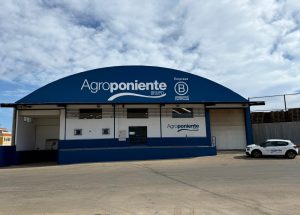Since the detection of these new thrips species, Koppert has been working on biological control solutions, conducting extensive R&D trials. Juan Carlos Rodríguez, Head of Sales for the Almería area, explains that the mite Amblydromalus limonicus proved to be the most effective tool against Parvispinus. “We saw that it fed not only on L1 and L2 stage larvae but also on those of Frankliniella occidentalis and Scirtothrips.” After comparing this solution with other commercial strategies such as Amblyseius swirskii and Montdo Ulti-Mite (Transeius montdorensis), they launched Limonica in May 2024. “It’s a very versatile solution, the most complete mite on the market.”
The first solution was launched in bottle format with 12,500 individuals, and this year they have managed to increase the concentration to 25,000. This is no easy task and requires significant development work, investment in resources, upgraded facilities, staff expansion, and strict climate control. “It’s a complex process. Offering a stable population at high concentrations takes a lot of work. Our next goal is to develop Limonica in Ulti-Mite sachets.”
These small biofactories allow predatory mites to withstand different humidity levels and maintain optimal conditions for reproduction. Thanks to their special material, they retain moisture and allow for the gradual release of mites over 4–6 weeks, ensuring effective and continuous biological control. In the 2025/26 season, pre-commercial field actions will be carried out, with full commercialisation planned for 2026.
Scenarios and strategies
There are no one-size-fits-all solutions in biological control. In addition to Limonica, Rodríguez recommends Orius as an important ally against both larvae and adults. It is essential to carry out combined releases “as early as possible” to ensure a high population when the pest appears.
In pepper crops in Almería, general recommendations vary depending on the crop cycle and location. For early crops in Berja and Dalías, where Frankliniella occidentalis and Scirtothrips are prevalent, they recommend high doses (100–125 mites/m2) of Swirskii and Orius. In farms with good humidity conditions, Limonica is advised.
RELATED NEWS: Fresón de Palos strengthens biological control in partnership with Koppert
For mid- and late-season crops in Adra and El Ejido, where Parvispinus is more common, if the pest has not yet been detected, they recommend Swirskii (90–100 individuals/m2). If it has been detected, then Limonica (80–90 mites/m2) or Montdo Ulti-Mite for larger farms (90–100 insects/m2), always together with Orius.
It is also crucial to place pheromone traps for monitoring, even before planting. And to feed beneficial insects with Nutari or Entofood to maintain high populations.


















